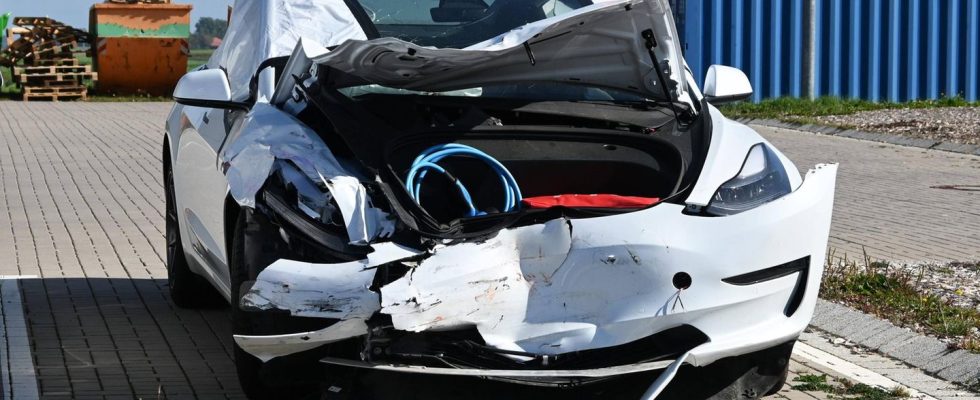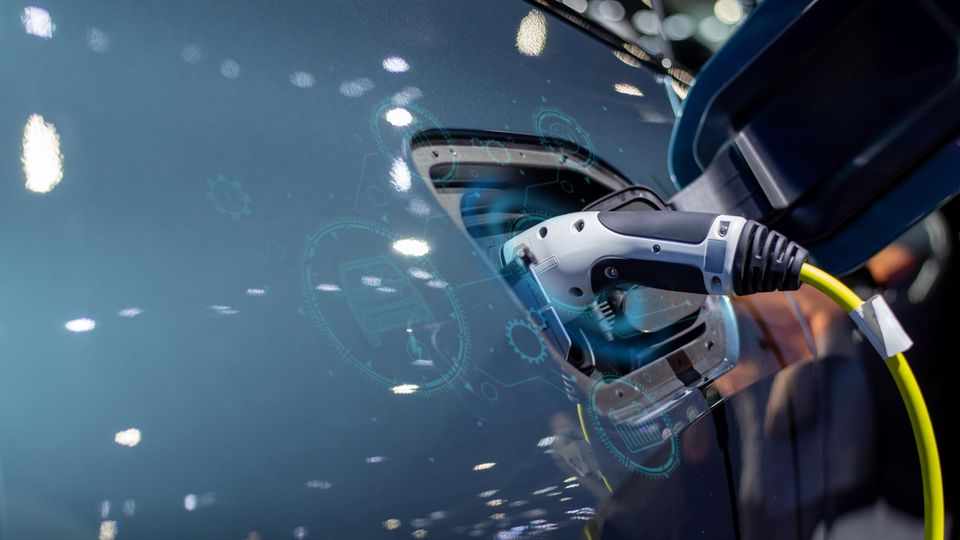Layoffs, quality deficiencies, lack of prospects and falling prices: things are not going well at Tesla at the moment. There are so many reasons for this that a turnaround would be a masterpiece.
Tesla hasn’t been used to bad times for years. The past decade has been marked by an unprecedented pioneering achievement that has made the company what is now the most valuable car manufacturer in the world. And by far: Even after the recent price slide, Tesla is worth almost half a trillion US dollars. More than all German car manufacturers combined. But things are currently going steeply downhill: At its peak, the value of Elon Musk’s most important pillar was around 1.2 trillion US dollars. The decline is not due to a whim of the markets, but has serious reasons.
For years, Tesla’s enormous value has been understood as a bet on the future – that’s also the reason why the brand makes the competition look so pale. A Tesla is a moving computer with tires, a source of endless innovation and constant change. And a vision. Because the company’s ultimate goal is not cars for drivers, but self-driving cars. Elon Musk announced a groundbreaking event on August 8th.
It will be a decisive battle for Tesla. If Musk cannot back up his promises for the future with facts, his company will continue to lose value and continue its downward trend. The boss goes all in.
Tesla’s offering is outdated, puppy protection is over
He doesn’t really have any other choice, because the current portfolio is not very convincing and Tesla can no longer make promising growth forecasts. In the first quarter of 2024, sales figures shrank by almost double digits and inventory is piling up in the factory parking lots.
This has different reasons. The current product range is outdated. Hardly anyone buys the luxury models S and The Cybertruck does not save the balance sheet. The stainless steel pick-up turns out to be a much-laughed-about permanent construction site (find out more here) for far too much money.
In addition, the notoriously poor quality of the vehicles is no longer acceptable. Gone is puppy protection, welcome to the real world. In a current report from “Auto Motor Sport” (issue 9/24), the specialist magazine describes several cases in which customers’ new cars rolled off the assembly line, some with serious defects. An entire industry has now formed around the many problems: experts who look for faults when vehicles are handed over, specialist companies who mass-produce replacements for vulnerable components and lawyers who are inundated with Tesla mandate inquiries every day.
This wouldn’t be a problem if there was perspective. Because despite all the problems, Tesla probably has the most stubborn and long-suffering fan base to date. A big hit and things would look up again. But Tesla probably cannot offer a rosy model future. In the best case scenario, the new luxury roadster will be ready this year. Not a mass product, but rather an extremely expensive performance show that, unlike in 2008, when an electric sports car was still something special, now has to compete against traditional brands like Porsche or Maserati.
For the time being, Tesla will not be filling the mass market, which is so important for a car manufacturer, with any further models. Even if Elon Musk denies it, according to several internal sources, both the news agency “Reuters“as well as the specialist magazine”Electrek” have tapped into the fact that the Model 2, a cheap small car, is on hold. This gives competitors like BYD, Stellantis and even VW important time, which in the past has always been on Tesla’s side. But that is now over and whoever gets a solid one first Small cars under 20,000 euros come first served.
The warehouses are full
The many existing vehicles further weaken the company. Price cuts and fluctuating offers not only reduce profits, but also trust in the brand. For a long time, Tesla was considered the most stable electric car in value, but now customers have to expect to have to lower their used prices at any time because the manufacturer is constantly tweaking the prices for new cars. A hopeless lose-lose situation because Tesla has to produce and sell.
The situation is made even worse by the fact that car rental companies such as Hertz and Sixt are explicitly reducing their Tesla fleet and temporarily completely oversaturating the market (you can find out more here). If you look at the reasoning, it’s no wonder: the repairs are too expensive, the resale values are too low and the margins are too small. Apart from the fact that customers are apparently not interested, the desired return cannot be achieved.
Most recently, Tesla responded to the many challenges with mass layoffs, the extent of which cannot yet be estimated. While the exact number of layoffs per location is not yet public, it is clear that Tesla will have to let go of a total of ten percent of its global workforce. In Berlin, this initially “only” affects hundreds of temporary workers, but overall the company also seems to be losing heavyweights such as chief engineer Andrew Baglino and business strategist Rohan Spatel. The stock market usually reacts favorably to a restructuring – at Tesla, Musk’s email to his team meant a loss of five percent at times.
Things don’t look very rosy in the other business areas either. Because even if Tesla wants to participate in the forecast trillion-dollar market for humanoid robots, the company embarrassed itself with the demonstration of the Tesla robot Optimus (you can find out more here). There is currently nothing more than a promise that the robot will one day no longer be dependent on remote control. Meanwhile, competitors like Boston Dynamics are pulling away with serious innovations.
The situation is probably similar with its own batteries, which Tesla has repeatedly touted as a panacea for the problems of today’s electric cars. In September 2020, Tesla promised that it would soon produce batteries that cost half the price, are easier to manufacture, offer more range and charge faster. As of today: A miracle has not happened and it is not foreseeable that it will happen again. The biggest developments can be found at BYD or CATL in China, not at Tesla in the USA.
Miracle weapon software in the sights of the authorities
The software remains. Tesla’s crown jewel. The basis for autonomous driving and the greatest hope the company still has to offer. Tesla has long wanted to leave the beta phase and show all manufacturers a finished and, above all, largely error-free version. But even the Teslas with access to the latest software are still driving with a relabeled test version, and accidents still occur in which it is assumed that the assistance systems could have played a decisive role. The word “Beta” no longer appears in connection with the “Full Potential for Autonomous Driving” (FSD), but Tesla can’t avoid adding the addition “Supervised”. The manufacturer still doesn’t offer anything more than standard assistance systems.
Worse still: Tesla is currently in a rather strange transition phase. Probably for financial reasons, the company is reducing the number and variety of on-board sensors and only relies on cameras; the high-priced models still have a radar. Tesla has not installed ultrasonic sensors (USS) in any car for over a year.
In the long term, this may not play a role, because the concept called “Vision Only” stipulates that the cameras use the software to detect everything with pinpoint accuracy and thus make the “old” technology superfluous, but the lack of sensors is currently causing problems. The parking aid was initially deactivated in cars that no longer had a USS. When it was delivered via an update, it initially worked reasonably well. It would take over a year until the car was able to do what it had already learned. There are not many customers who particularly value experimenting with their own product.
Drive turnaround
1881 to today: The history of the electric car is longer than expected
And so it happens that Tesla no longer makes a name for itself with outstanding achievements, but rather more and more often with software difficulties or problems such as investigations by the US Federal Highway and Vehicle Safety Authority (NHTSA), which found driving errors in the software in several investigations takes the magnifying glass.
And with results: The NHTSA has already ordered a compulsory update for over two million vehicles (find out more here) and is continuing to investigate. Instead of groundbreaking innovations, Tesla currently wants to attract customers primarily through price, and recently even halved the price of the additional FSD function. At this point again: existing customers will thank you.
The question remains, what is the root of all evil? The answer is probably also: Elon Musk. Much to the annoyance of investors, the CEO has been busy with countless other things since taking over Twitter – and has not only missed an important time to reform his company and take the helm. Maybe that’s why Musk is going all-in at the beginning of August: because he has to prove to the world that Tesla can maintain pole position even in a highly competitive market and despite all odds. If that doesn’t work, things will initially look pretty bleak for the stock market value.



